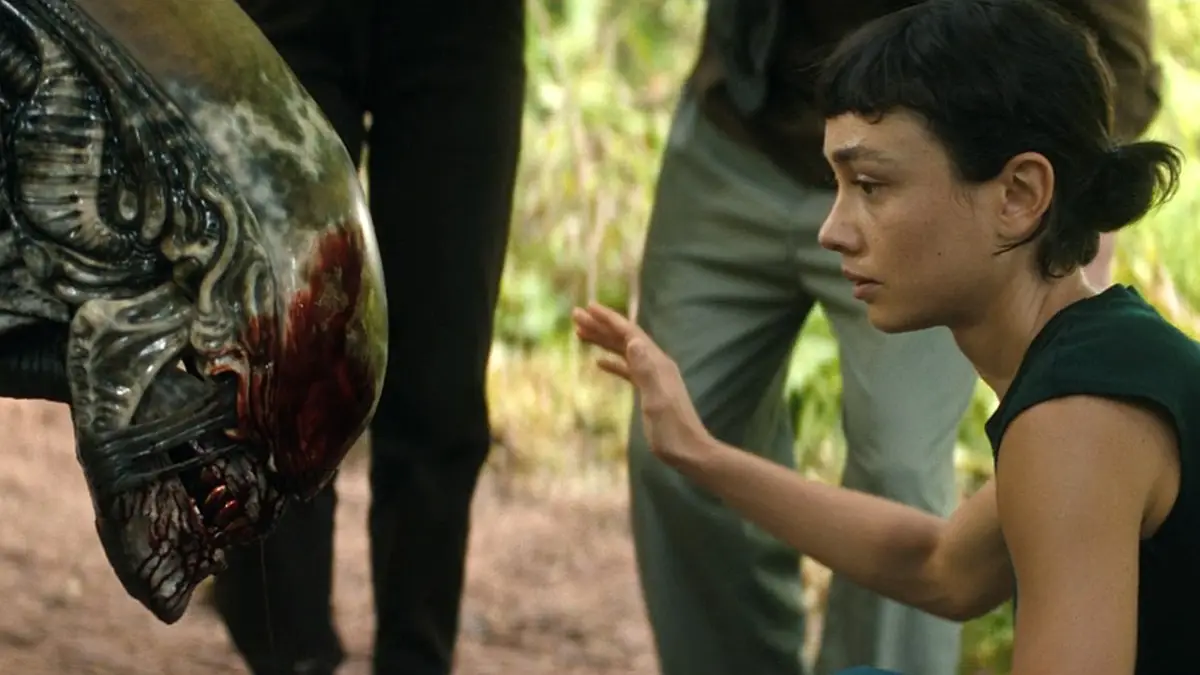
Warning! This article contains SPOILERS for Alien: Earth season 1.Disney and FX’s Alien: Earth added so much lore to the classic Xenomorphs that it has completely changed how I view the iconic sci-fi horror monsters. Since its inception, Alien: Earth was always going to change the way we view Xenomorphs. From showing Xenomorphs in broad daylight to bringing them to Earth very early on in the Alien timeline, Earth is groundbreaking.
I just didn’t realize how much Alien: Earth was going to change the way I view Xenomorphs. By the ending of Alien: Earth season 1, the show was basically dealing with a completely different type of Xenomorph than the ones I was used to from the main canon Alien movies. The best part is, most of Alien: Earth’s changes to the Xenomorphs were additions that didn’t rewrite preexisting lore.
Wendy Can Communicate With & Control Xenomorphs
The most overt way Alien: Earth added to our understanding of Xenomorphs was through Wendy. As we all know, Wendy can communicate with and control Xenomorphs by speaking their language. Other characters have controlled Xenomorphs before, like Eloise from the Alien comics, but Wendy is the first to do so in the main Alien canon of the movies and show.
The Xenomorph language alone is a huge update. Prior to Alien: Earth, we didn’t even know Xenomorphs had a language. The prevailing theory was that they used telepathy or pheromones to communicate with one another. Now we know that Xenomorphs use a series of guttural clicks and whirs as the basis of their language, and that it’s robust enough to give simple commands like “hide” and “follow.”
Wendy’s control over Xenomorphs is an even bigger change to our understanding of the species. In all the Alien movies, Xenomorphs have been portrayed as rabid animals interested only in murder and protecting their Queen. Now, however, we know that they can cooperate with others and share a common goal, and it doesn’t even have to be centered around a Queen or a hive.
More broadly, Wendy’s control of Xenomorphs also changes Weyland-Yutani. Even after just a few episodes, it’s clear now that Xenomorphs are the perfect biological weapons and that Weyland-Yutani’s centuries-long search for the secret to controlling them was justified. As long as you can speak their language, you can use a Xenomorph as the perfect killing machine against your enemies.
Xenomorphs Might Not Be The Most Powerful Species In Space
Another big update to Xenomorph lore came from one of Alien: Earth’s other alien species: T. Ocellus, also known as the eyeball monster. For decades, we’ve assumed Xenomorphs are the deadliest species in space. They can rip through Colonial Marines like butter, after all, and no one has been able to effectively control them in any significant capacity. T. Ocellus, however, changed that narrative.
T. Ocellus has cast some doubt on the idea that the Xenomorphs are the most powerful species in space. To run through a few of T. Ocellus’ abilities, it can take over the body of any host that has eyes, it has at least near-human intelligence, comes from a society advanced enough to have discovered pi, and is incredibly dangerous even without a host.
As we saw during the sabotage of the USCSS Maginot, T. Ocellus actually was able to fight a Xenomorph to a standstill, both with and without a host. Only the hybrids like Wendy and the Yautja have ever been able to hold their own in unarmed close combat with a Xenomorph before, and the Yautja are no longer canon. That physical prowess, combined with its intellect, makes T. Ocellus a huge threat.
It may even mean that T. Ocellus is more powerful than a Xenomorph. Alien: Earth has drastically increased the Xenomorphs’ social and intellectual abilities, but they simply can’t compare to T. Ocellus in terms of reasoning and problem-solving. We have no idea what T. Ocellus’ planet or culture may look like, but if it’s nearly as advanced as ours, it’s far more dangerous than Xenomorphs.
Xenomorphs Aren’t Always Out To Kill
Another big change to the Xenomorphs themselves is more of an inherent trait, rather than one brought on by Wendy’s control. After Wendy was captured by Prodigy’s forces, her Xenomorph was left to run amok on the island. In the finale, we saw it massacre several soldiers, but it also had a relatively calm interaction with Dame Sylvia, until it was shot by soldiers.
That interaction with Sylvia indicates that the Xenomorphs aren’t entirely bloodthirsty, and that they may even have a level of curiosity. While it was running free without Wendy’s commands, the Xenomorph only killed humans who posed an obvious threat to it. When it encountered Sylvia, however, it seemed like it was regarding her and trying to figure her out on an intellectual level.
This is honestly a huge change to how we view Xenomorphs. Previously, most of us thought of them as simple predators whose only function was to kill and breed. Prometheus also doubled down on that conception, as there were a lot of hints that Xenomorphs were developed by the Engineers as biological weapons. Now, however, Xenomorphs are so much more than just killing machines.
The Xenomorphs in Alien: Earth display far more animalistic tendencies than any other iteration of the franchise. The fact that Xenomorphs actually display some level of curiosity even serves as a sign that they may be semi-intelligent. They (seemingly) want to know more about the world they inhabit, and they have the ability to curb their predatory instincts long enough to examine other lifeforms.
Young Xenomorphs Will Stick With Adults
Part of what has, historically, made the Xenomorphs so horrifying is their self-reliance. Once an egg is laid, a Xenomorph can find a host and gestate into a fully-grown drone all on its own without any help from other members of its species. That’s how a single Xenomorph can rip through an entire ship like the Nostromo just hours after it bursts out of a person’s chest.
Alien: Earth, however, showed us that it’s not necessarily always that way. In the finale of Alien: Earth, Wendy’s Xenomorph and the Xenomorph that burst out of Arthur Sylvia joined together and actually seemed to be bonding with one another for a brief shot. The younger specimen actually huddled under the older, as if it was taking shelter and looking for security from another member of its species.
Like the previous points about the Xenomorph languages and curiosity, this also changes the entire species. We knew from Aliens that Xenomorphs are quite similar to hive insects with a queen that lays eggs, but Alien: Earth has indicated they have some semblance of society. They’re not mindless bioweapons; they care for their young and take an active role in rearing children.



